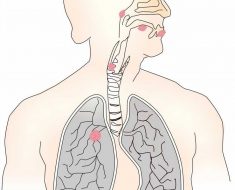The consumption of dairy products has long been thought to increase the risk of death, particularly from coronary heart disease (CHD), cerebrovascular disease, and cancer, because of dairy’s relatively high levels of saturated fat. Yet evidence for any such link, especially among US adults, is inconsistent. With the exception of milk, which appears to increase the risk of CHD, dairy products have been found to protect against both total mortality and mortality from cerebrovascular causes, according to research presented today at ESC Congress 2018, the annual congress of the European Society of Cardiology.
Therefore, current guidelines to limit consumption of dairy products, especially cheese and yogurt, should be relaxed; at the same time, the drinking of non-fat or low-fat milk should be recommended, especially for those who consume large quantities of milk. “A meta-analysis of 29 cohort studies published in 2017 found no association between the consumption of dairy products and either cardiovascular disease (CVD) or all-cause mortality,” said Professor Maciej Banach, from the Department of Hypertension at Medical University of Lodz, Poland. “Yet a large 20-year prospective study of Swedish adults, also published in 2017, found that higher consumption of milk was associated with a doubling of mortality risk, including from CVD, in the cohort of women.”
Professor Banach and his co-researchers examined data from a 1999-2010 National Health and Nutrition Examination Surveys (NHANES) study of 24,474 adults with a mean age of 47.6 years, 51.4% of whom were female. (NHANES is conducted by the US’s Centers for Disease Control and Prevention.) During the follow-up period of 76.4 months, 3,520 total deaths were recorded, including 827 cancer deaths, 709 cardiac deaths, and 228 cerebrovascular disease deaths. The researchers found consumption of all dairy products to be associated with a 2% lower total mortality risk and consumption of cheese to be associated with an 8% lower total mortality risk (hazard ratio [HR]: 0.98, 95% confidence interval [CI]: 0.95-0.99; HR: 0.92, 95% CI: 0.87-0.97, respectively). For cerebrovascular mortality, they found a 4% lower risk with total dairy consumption and 7% lower risk with milk consumption (HR: 0.96, 95% CI: 0.94-0.98; HR: 0.93, 95% CI: 0.91-0.96, respectively).
A meta-analysis by Professor Banach and his co-researchers of 12 prospective cohort studies with 636,726 participants who were followed for approximately 15 years confirmed these results. But milk consumption was also associated with a 4% higher CHD mortality, while consumption of fermented dairy products such as yogurt was associated with a 3% lower rate of total mortality. The yogurt finding, however, was determined to be not significant after further adjustment (Q4: HR: 0.98, p=0.125).
The researchers concluded that among US adults, higher total dairy consumption protected against both total mortality and mortality from cerebrovascular causes. At the same time, higher milk consumption was associated with an increased risk of CHD, an association that needs further study. Causality, however, could be difficult to determine, as most people who consume milk also consume other dairy products. “In light of the protective effects of dairy products,” said Professor Banach, “public health officials should revise the guidelines on dairy consumption. And given the evidence that milk increases the risk of CHD, it is advisable to drink fat-free or low-fat milk.”
Source: Read Full Article





